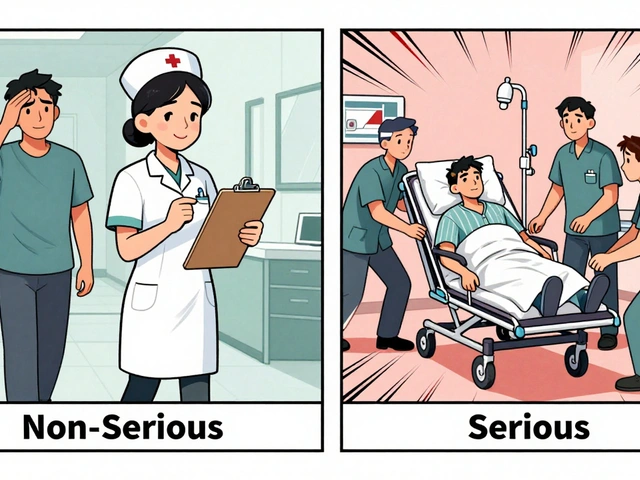Rifampin: What It Treats and What to Watch For
If you’ve been told to take rifampin (sometimes spelled rifampicin), you probably have questions. This page gives straightforward answers: what rifampin treats, how people take it, common side effects, and the most important safety tips so you can stay on track with treatment.
How rifampin is used
Rifampin is an antibiotic mainly used to treat tuberculosis (TB) and some other serious infections. It’s also used short-term to prevent meningococcal disease in people who’ve been exposed. For TB it’s almost always given with other antibiotics — not by itself — to avoid resistance. Typical adult dosing for TB is 600 mg once daily as part of a combination regimen. For meningococcal exposure, a single 600 mg dose for adults is common. Pediatric doses are based on weight.
Rifampin works by stopping bacteria from making essential proteins. Because it’s powerful, doctors monitor patients while they’re on it and decide the exact dose and length of treatment based on the infection and test results.
Safety tips and common interactions
Rifampin causes a few unique and important effects you should know about. First, it induces liver enzymes (CYP450). That means rifampin can lower blood levels of many drugs — including birth control pills, warfarin, some HIV medicines, certain antifungals, and many seizure drugs. If you take any long-term medication, tell your provider before starting rifampin. You may need a dose change or a different medication.
Another obvious side effect: it turns urine, sweat, saliva, and tears an orange-red color. It can stain contact lenses, so use glasses while on treatment if possible. That color change looks alarming but is usually harmless.
Liver problems are the most serious risk. Before starting rifampin, clinicians usually check liver function tests. Watch for symptoms like yellowing of skin or eyes, dark urine, severe nausea, or unexplained tiredness. Avoid heavy alcohol use while on rifampin — both stress the liver.
Take rifampin on an empty stomach when you can — one hour before or two hours after a meal — to improve absorption. If stomach upset is bad, it’s better to take it with food than skip doses. Never stop rifampin suddenly without talking to your doctor; stopping early or missing doses can cause treatment failure and resistance.
Pregnancy and breastfeeding: rifampin is sometimes used in pregnancy when benefits outweigh risks, especially for TB. It can pass into breast milk. Discuss risks and alternatives with your provider if you’re pregnant or breastfeeding.
Final quick checklist: tell your doctor about all medicines and supplements, expect orange body fluids, get baseline and follow-up liver tests as recommended, and finish the full course. If you have questions about dosing, interactions, or side effects, your pharmacist or prescriber should be your first call.

Rifampin and Stomach Issues: Tips for Managing Gastrointestinal Side Effects
Worried about stomach problems from taking rifampin? This article breaks down why rifampin can upset your gut, what those side effects feel like, and how to deal with them. Packed with practical tips like what foods might help, when to take your meds, and warning signs you shouldn't ignore. Get honest answers from someone who's gotten the run-around from confusing medical advice, without the medical jargon. If you want to stick with your treatment but keep your stomach calm, this guide is for you.
View More




